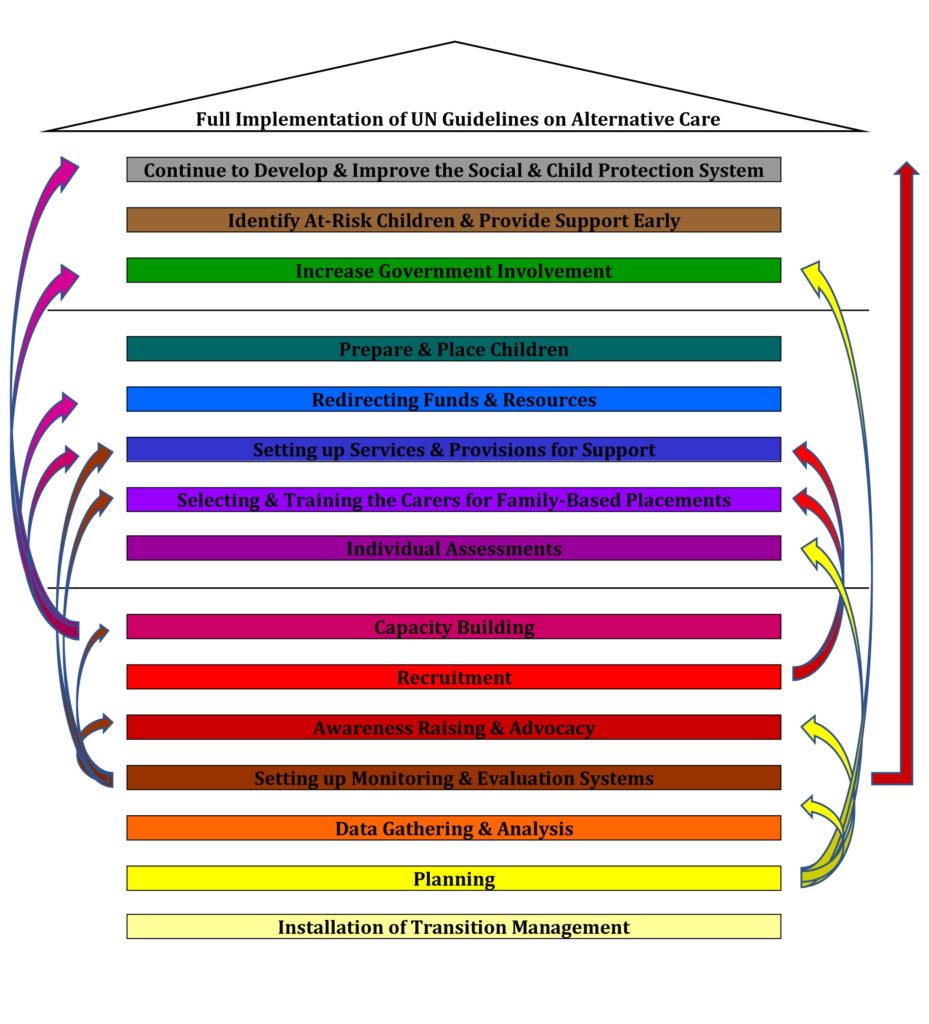Part 12 of the explanation with the ToC: Like the individual assessments, the recruitment and selection of foster families, caregivers for small group homes, mentors for supported living and other people who will be taking care of children in the community in the alternative care options that will be established, needs to be done at the local level. Ideally, children should be placed within the community that they came from or if that is not possible, the community near the school they have attended while in the institution. This provides the child with some established connections to the people living nearby.
As mentioned under Awareness-raising and Advocacy, awareness-raising should start well in advance of starting to recruit caregivers, for that recruitment to be more likely to be successful. However, the recruitment stage benefits from being combined with an upsurge in the awareness-raising campaign. For example, by combining the now-familiar message that children do better when they grow up in a family, with the question: would you provide a child with the chance to grow up in your family? Or by holding awareness-raising events, where at the end you mention that you are looking for people to apply for caregiving positions – with specific mention of what kind of positions and what it would entail.
Recruitment of caregivers -whether families or individuals – has to be combined with assessment and selection. Not everyone is who applies is going to be suitable for the role, and protecting children and making sure that placements are in their best interest have to be at the core of what is done. It can be disheartening when you have to reject the majority of applicants as unsuitable, but having to put in more effort to find additional caregivers is not as high a price to pay as what might happen to the child if placed with an unsuitable person or family. It is particularly important not to give in to pressure to accept high-profile people or generous donors as foster families if assessment shows that they are not suitable in the role.
Once people have been assessed – and potential foster families require a similar assessment as children’s families that are considered for reintegration – they have to be willing to receive training and guidance. If they are not willing to accept this, they are not suitable and should be rejected.
Training should be given to all caregivers, but also families taking back their own children. It may be harder to persuade families of the need to be trained to take care of their own children, however, the children going back to the family, are not the same as they were when they left. The children have been institutionalised and this has profound effects on their development and their behaviour, if their family is not prepared for this, and have not learned how to deal with it, in all likelihood the child will be sent back to the (or another) institution again, which is an extremely traumatic experience for the child.
Training needs to be provided on:
- The effects of institutionalisation
- Challenging behaviour and how to deal with it
- Effective ways of disciplining without using physical punishment
- Positive parenting
- Asking for help when struggling to cope

If you would like to read the explanation with the model from the very start, you can go HERE.
Please share this blog to help spread awareness.

